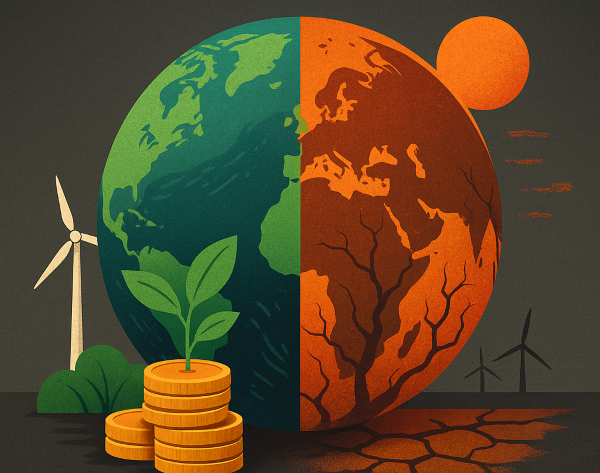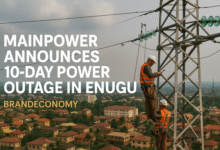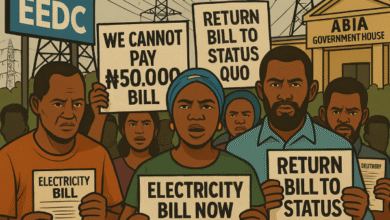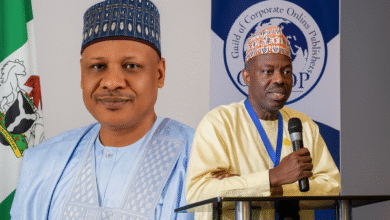COP30: UN Climate Chief Demands Urgent Surge in Climate Finance to Avert Global Disaster

As the world edges closer to COP30 in Belém, Brazil, the United Nations Climate Change (UNFCCC) chief, Simon Stiell, has issued a clarion call for an urgent increase in global climate finance, warning that the growing gap in adaptation funding threatens to undermine decades of development progress in vulnerable nations.
Stiell’s statement comes amid heightened concern that many developing countries remain dangerously under-resourced to withstand the worsening onslaught of climate-related disasters — from historic floods and prolonged droughts to wildfires and coastal erosion.
Climate Adaptation: The Missing Link Between Promise and Action
The UN Climate Chief’s warning follows the release of a new UNFCCC report assessing global progress on National Adaptation Plans (NAPs) — blueprints designed by member states to build resilience against climate shocks.
According to the report, while several countries have made commendable strides in policy formulation, chronic underfunding and implementation delays are slowing real-world impact.
“Adaptation is not optional; it is absolutely essential,” Stiell stressed during the report’s launch in Brasília. “The climate crisis is destroying lives and livelihoods in every region. Finance must flow right now — not tomorrow.”
He emphasised that adaptation financing is not merely a defensive tool, but a transformative investment that can empower communities, strengthen food systems, and stimulate economic resilience.
The Finance Gap: $1.3 Trillion in Question
Ahead of the COP30 summit, the UN has set an ambitious target — mobilising $1.3 trillion in global climate finance by 2030. Yet, according to the UNFCCC, progress remains alarmingly slow.
Many developing nations, particularly in Africa, South Asia, and the Pacific, are caught in a cycle of disaster recovery without resilience, spending scarce resources rebuilding after climate catastrophes rather than investing in prevention.
The gap is glaring: while over 67 developing nations have submitted National Adaptation Plans — including 23 least developed countries and 14 small island states — only a fraction have received the necessary financial support to implement them.
This funding shortfall, Stiell noted, risks turning well-designed adaptation blueprints into “unrealised aspirations on paper.”
From Sea Walls to Smart Solutions: The Case for Scalable Resilience
Stiell highlighted numerous examples of what effective adaptation looks like — from cyclone warning systems and floating housing projects to drought-resistant agriculture and community-based mangrove restoration.
Such measures, he said, offer proof of concept that targeted adaptation investments can yield exponential returns — protecting lives, stimulating innovation, and creating jobs.
But without financing, these solutions remain fragmented.
“We are seeing the cost of inaction rise faster than the cost of adaptation,” Stiell warned. “Countries know what to do, but they simply lack the means. Every dollar delayed means more lives lost and more economies destabilised.”
Climate Justice and Global Solidarity on the Line
Beyond economics, Stiell framed the conversation as a matter of equity and global solidarity, arguing that those least responsible for global emissions bear the heaviest burden of its consequences.
He called for wealthier nations and private investors to honour and expand their commitments to climate finance — not as charity, but as a shared responsibility for global stability.
“COP30 will be a key test of global solidarity,” he said. “We must connect climate action to real lives — from farmers in sub-Saharan Africa to coastal communities in Southeast Asia — and spread the vast benefits of a climate-resilient economy.”
Business Implications: Why Climate Finance Is Smart Economics
Analysts at BRANDECONOMY note that the demand for accelerated climate finance is not just a moral imperative — it is an economic necessity.
Sectors such as insurance, agribusiness, renewable energy, and infrastructure stand to gain from a coordinated global adaptation agenda. Research by the Global Commission on Adaptation estimates that every dollar invested in resilience yields up to $10 in net economic benefits through avoided losses, innovation, and job creation.
Private sector engagement — including green bonds, blended finance, and impact investing — is now being touted as the catalyst for closing the climate finance gap.
In Africa, for instance, fintech and energy startups are emerging as powerful enablers of climate-smart solutions — from off-grid solar access to precision agriculture — driving both profit and purpose.
BRANDECONOMY Insight: The Countdown to Belém
With COP30 just weeks away, the focus has shifted from pledges to performance.
The success of the conference will depend on how effectively governments, multilateral banks, and corporations can convert commitments into liquidity, ensuring that funds reach communities where adaptation is most urgently needed.
For Nigeria and other emerging markets, climate finance will be pivotal not just for environmental protection but for economic diversification and sustainable industrialisation.
As BRANDECONOMY observes, climate resilience is fast becoming the new metric of competitiveness — a determinant of how nations attract investment, protect productivity, and secure long-term growth.
“Adaptation is no longer a side conversation,” an energy economist told BRANDECONOMY. “It is central to the business of survival — for economies, for industries, and for humanity itself.”











